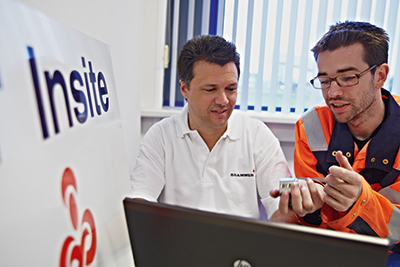For most manufacturers, procurement strategies for direct spend items — such as raw materials — are carefully planned and scheduled to ensure value for money, availability and optimal inventory holding.
With indirect items such as maintenance, repair and overhaul (MRO) products and industrial consumables, however, the procurement process is typically more ad hoc.
Purchasing from multiple local suppliers, holding excessive inventory owing to unpredictable usage and thousands of transactions are common occurrences.
As the cost for each individual item is generally relatively low, rationalising procurement is not frequently prioritised; and when it is, the task can be complex and daunting.
Take, for example, a manufacturer holding 10,000 stock keeping units (SKUs), purchased by numerous individuals from stores staff to engineers, and with no regulation regarding supplier choice or frequency of ordering.
A single high use item — perhaps an abrasive disc, spanner or disposable glove — could be purchased by different people, from different suppliers, at different prices, at the same time, without considering stockouts or overstocking. Across one plant, this could prove to be a minefield, but across a multi-site organisation, standardising the brand, model and price might seem to be an insurmountable challenge. It is generally recognised that whilst spend on MRO and industrial supplies can represent around 15–20% of total spend, this category can equate to 80% of purchasing transactions.1
Optimising the MRO procurement process can therefore not only deliver significant savings in terms of pure product cost, but also in administrative costs and a reduction in both inventory and supply base. In a study by the Aberdeen Group, a survey summarised the key challenges cited by those tasked with procuring industrial and MRO supplies.2
Lack of visibility into spend was highlighted as a significant challenge faced by organisations aiming to streamline and optimise MRO procurement, closely followed by an inability to ensure compliance with supplier contracts. Within multi-site organisations, buying practices at site level often result in individual loyalty to local suppliers, meaning hundreds of companies may be issuing invoices to a single site. Although the niche supplier may not be charging a premium, using a large amount of such suppliers increases the administration time associated with ordering and receiving goods, as well as processing payments.
A lack of traceability also leads to an inability to create accurate purchasing plans and strategies, as organisations rarely have a true picture of the volume of items used and the correct amount to be held in stock to maintain optimal service levels. Furthermore, stock could continue to be ordered because of a shortage in one area when large supplies are available elsewhere.
In this instance, it is virtually impossible to drive meaningful year-on-year savings. There is often little or no incentive for an individual supplier to offer price reductions for leveraged volume, or for them to dedicate resources to cost savings or continuous improvement activity.
The complexities of MRO procurement mean that the costs associated with procurement and inventory management are greater than the product item price, increasing the total cost of ownership many times over. In fact, in a typical cost profile of MRO and industrial supplies, only 40% of the total product spend can be attributed to the product itself.
Some 35% is down to the cost of inventory — storage, handling and obsolescence costs — while the remaining 25% is accrued through the cost of procurement. This includes the hours of work associated with selecting products, ordering and receiving and making payment, as well as the cost of errors. This means that for every £100k of annual spend on MRO, the total cost of ownership is around £250k or more.
The Aberdeen Group study also showed that “best in class” companies were successful in achieving cost reductions of 19% by taking a considered approach to MRO and procurement. So, what constitutes “best practice” in MRO and industrial supplies procurement and how are cost and production efficiency benefits really achieved?
Best practice solutions
As an example, product optimisation and inventory management are closely related. Organisations should regularly review the use of both OEM (original equipment manufacturer) and substitute parts to ensure the most suitable products are purchased and in stock, while applying lean and 5S principles helps to avoid overstocking, obsolescence and stockouts within an engineering stores environment. Product optimisation ensures that the same or similar items are not being purchased through multiple suppliers, reducing the supplier base.
Applying best practice to MRO can also contribute to enhanced energy efficiency and even health and safety. Careful analysis of PPE needs can help to prevent over-specification and the associated overspend while maintaining the correct level of protection for employees. Similarly, reviewing energy intensive assets such as motors, drives and pumps to ensure the most efficient models are available can cut costs by reducing energy consumption.
In terms of processes and systems, best practice in accounts payable and e-commerce are also linked — both online ordering and receiving consolidated invoices electronically cut down on transaction costs, as well freeing employees up for value-adding projects. Efficient category management meanwhile, by implementing supplier service level agreements (SLAs) and scorecards, should aim to achieve in excess of 80% contract spend consolidation compliance.
To further optimise efficiencies among production or maintenance employees, lineside supply is an important factor to consider, which involves making high volume industrial consumables available close to the point of use, rather than a long “walk and wait” trip to stores.
Best practice, however, cannot be implemented successfully without being aligned to clear goals. Joel Roth, in his book, The 20% Solution: A Practical Guide to Dramatic Cost Reduction in MROP Procurement, notes that: “When asked for their MRO goals, many procurement managers offer vague statements like ‘lower costs, better service, higher quality.’ Or, ‘I’d like to cut prices by 10%.’ Goals that are general are useless; they must be specific and measurable. Moreover, goals must be related to activity levels: it is probably unrealistic to expect a 20% cost reduction if production volume is increasing by 20%.”

The following examples of SMART — specific, measurable, achievable, realistic and timely — goals applied to the optimisation of MRO procurement help to demonstrate this principle:
- improve signed-off operational cost savings by 25% in 3 years through vendor consolidation and partnering with strategic suppliers
- reduce purchase to pay costs by 20% through the application of consolidated invoicing and vendor reduction
- reduce working capital tied up in inventory by 10% in 2 years through the use of vendor managed inventory and consignment stock.
Developing strategic relationships with a smaller number of suppliers can help to achieve all of these objectives, as stronger partnerships lead to the delivery of value-adding services. By replacing a large, fragmented supplier base with fewer, longer-term relationships, organisations can leverage reductions in transaction costs and operational cost savings as the vendor is as motivated as the company itself to not only achieve savings, but also add value through close collaboration.
Vendor managed inventory
Returning to the concept of best practice in MRO procurement, one additional factor can be implemented that has the potential to impact all other aspects: vendor managed inventory. Choosing to outsource the management of industrial supplies and MRO is a strategy recognised by the Aberdeen Group as part of its 2006 report as one method of improving performance. The report notes that, as external providers understand market dynamics, they are therefore able to leverage more favourable agreements, and also focus on more strategic cost reductions.
A suitable value adding supply partner must have excellent relationships with the manufacturers of MRO products and industrial consumables — able to not only leverage buying power, but also benefit from technical expertise, exclusive product ranges and OEM support. They should have a track record of successfully implementing lean engineering stores and vendor managed inventory solutions, demonstrated by their own best-in-class supply chain, and show how their activities have delivered added value over and above pure cost savings.
One of Brammer’s key solutions for MRO procurement and management is its Insite service — effectively a dedicated Brammer branch housed within a customer site geared entirely to meeting the needs of that organisation. It provides the buying power of a major pan-European supplier with the personal touch of onsite MRO product experts who are able to quickly integrate with a customer’s team to deliver high levels of customer service and cost saving delivery.

To maintain and improve plant uptime, having the correct MRO products available at the time of need is imperative. Although it is tempting to keep high inventories in stock, bringing on board a strategic MRO supplier can drive down unnecessary inventory and the associated costs. Effective MRO partners will often be able to deliver critical parts within 1–2 working days, eliminating the need to hold these products on-shelf in stores.
By reducing the amount of customer-owned inventory and replacing with in-house consignment stock, paid for only once used, customers are able to reduce the amount of working capital tied up in stock. But, for a partnership with an MRO supplier to be successful, a number of prerequisites must exist. Responsibilities for each party must be clearly defined, with standards and objectives agreed at the outset. As this is a partnership approach, rather than a traditional supplier-customer model, regular reporting and reviews at the appropriate level must also be conducted to both communicate successes and highlight development areas — especially across multi-site organisations.
References
- J. Roth, The 20% Solution: A Practical Guide to Dramatic Cost Reduction in MROP Procurement (AuthorHouse, UK, 2008).
- The Aberdeen Group, The Maintenance, Repair and Operating Supplies Benchmark Report: Strategies for Improved MRO Spend Management: www.scribd.com/doc/61410262/AberdeenGroup-MRO-Benchmark-Report (2006).




